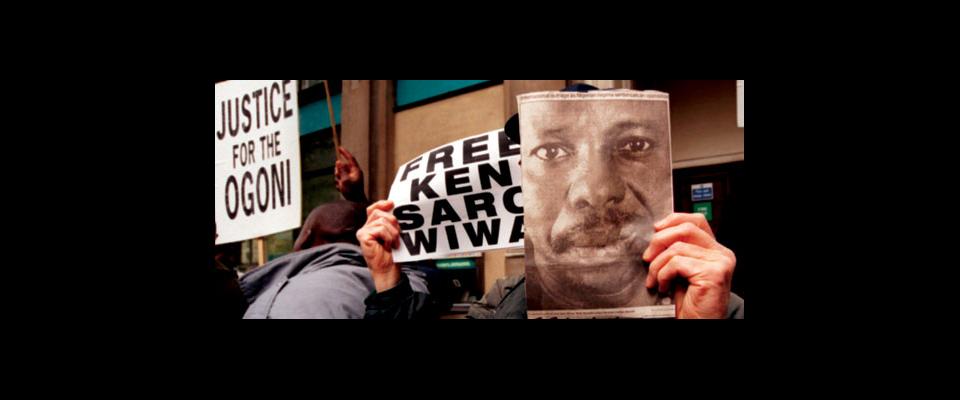UC Berkeley is sharing a bit of the glory at this year’s Goldman Prize ceremonies: One of the recipients, Myint Zaw of Myanmar, was a visiting scholar at UC Berkeley’s Graduate School of Journalism from 2007 to 2008. Presented on Earth Day by the San Francisco-based Goldman Foundation, the prize is often cited as the “Green Nobel,” the ultimate recognition for environmental activism. (It also comes with a no-strings award of $150,000.)
You don’t get the Goldman for recycling aluminum cans or picking up cigarette butts at the beach. You have to do something that has regional or global impact, often involving personal risk. For Zaw, 38, that meant opposing the plan by Myanmar’s then-ruling military dictatorship to dam the 1,350 mile-long Irrawaddy River, the nation’s longest waterway.
Proposed by the Chinese Power Investment Company in 2009, the Myitsone Dam would have displaced more than 12,000 people, mostly members of the minority Kachin ethnic group. It would’ve submerged innumerable villages and vast swathes of forest and croplands. On completion, it would’ve been the planet’s 15th largest dam, with 90 percent of its hydropower going to China’s Yunnan province, just over Myanmar’s northeastern border.
“With a strict military regime, you just can’t do direct action. So we figured out a way to share the information without challenging the government.”
Zaw, a journalist and photographer, learned of the project from perusing an article in a state-owned newspaper – which, of course, hewed to the perspective of the military junta ruling at the time. But Zaw could read between the lines, and realized the dam would be a crippling blow to the Kachin – not to mention the Irawaddy’s ecosystem and the rich fisheries and rice culture it supports. He resolved to do something about it.
Given the humorless response Myanmar’s generals usually reserved for anyone who evinced the slightest hint of dissatisfaction with official writ and policy, that took guts. But Zaw was shrewd as well as determined. He knew he couldn’t oppose the project very effectively if he were hanging by his thumbs in a Yangon dungeon.
“With a strict military regime, you just can’t do direct action,” Zaw says. “So we figured out a way to share the information without challenging the government.”
Zaw embarked on a photographic expedition of the Irawaddy, taking shots of the river, its people and environs – all of which would be destroyed by the rising waters behind Myitsone Dam. He then presented the images during at a solo photography exhibit, using the event as an opening wedge for discussions on the river’s fate. Ultimately, that effort morphed into a touring exhibition featuring Zaw’s work and the contributions of a supporting group of musicians and poets. The troupe traveled throughout Myanmar, presenting performances that highlighted both the beauty and vulnerabilities of the Irawaddy system. While traveling, Zaw met with both community leaders and Chinese representatives to discuss the profound downsides of the Myitsone project.
“We were able to gradually bring pressure to bear,” says Zaw. “Not through confrontation, but through discussions and meetings with local leaders, and by connecting with people emotionally through our photos, songs and performances.”
Ultimately, Zaw’s campaign struck chords that resonated with the leadership as well as the rice-farming and subsistence fishing hoi polloi along the Irawaddy. Myitsone Dam became viewed by citizens and rulers alike as Chinese hegemony, a project that would destroy much of Myanmar’s natural patrimony to bolster China’s already pell-mell growth. In September 2011, Thein Sein, the newly-elected President of Myanmar, stopped all work on the dam. But the Irawaddy is by no means out of danger, emphasizes Zaw.
“There is a presidential election this year, and the new administration could reverse the earlier decision and start up construction again,” says Zaw. “We’re hopeful that won’t happen, but we’re ready to respond to any new developments.”
Zaw credits much of the success of his Irawaddy campaign to his year at Berkeley.
“I was able to study anything that interested me, and I concentrated on environmental issues and documentary photography,” he says. “That really gave me the tools I needed when I returned to Myanmar.”
What now? Zaw says the money from the Goldman Prize will fund future activism on the Irawaddy and beyond.
“We’re going to continue working on the Irawaddy, of course, but there are a lot of other rivers in Myanmar, and Asia as a whole, that need help,” he says. “We’re sticking with river conservation, but this prize will allow us to do a lot more work in a lot more places.”



















